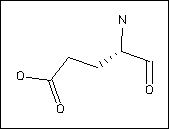

For an updated version of these pages, click here


Substitution preferences:
All protein types:
| Favoured | Asp ( 2) | Gln ( 2) | Lys ( 1) | |||||
| Neutral | His ( 0) | Arg ( 0) | Ser ( 0) | Asn ( 0) | ||||
| Disfavoured | Pro (-1) | Thr (-1) | Ala (-1) | Val (-2) | Gly (-2) | Tyr (-2) | Met (-2) | Trp (-3) |
| Phe (-3) | Ile (-3) | Leu (-3) | Cys (-4) |
| Favoured | Asp ( 1) | Gln ( 1) | ||||||
| Neutral | Ala ( 0) | Lys ( 0) | His ( 0) | Asn ( 0) | Pro ( 0) | Arg ( 0) | Ser ( 0) | Thr ( 0) |
| Disfavoured | Met (-1) | Val (-1) | Tyr (-1) | Gly (-1) | Phe (-2) | Ile (-2) | Trp (-2) | Leu (-2) |
| Cys (-2) |
| Favoured | ||||||||
| Neutral | Gln ( 0) | Pro ( 0) | Asp ( 0) | Asn ( 0) | Lys ( 0) | His ( 0) | Met ( 0) | Arg ( 0) |
| Ser ( 0) | Thr ( 0) | Val ( 0) | Ala ( 0) | |||||
| Disfavoured | Leu (-1) | Gly (-1) | Trp (-1) | Tyr (-1) | Ile (-1) | Phe (-2) | Cys (-6) |
| Favoured | Asp ( 8) | Gln ( 7) | Gly ( 3) | His ( 2) | Arg ( 2) | Asn ( 1) | Lys ( 1) | |
| Neutral | Ala ( 0) | Ser ( 0) | ||||||
| Disfavoured | Thr (-1) | Val (-2) | Trp (-3) | Cys (-3) | Pro (-3) | Met (-3) | Ile (-4) | Leu (-5) |
| Tyr (-5) | Phe (-6) |
Role in structure: Being charged and polar, Glutamates, prefer generally to be on the surface of proteins, exposed to an aqueous environment. When buried within the protein Glutamates (and Aspartates) are frequently involved in salt-bridges, where they pair with a positively charged amino acid to create stabilising hydrogen bonds, that can be important for protein stability.
